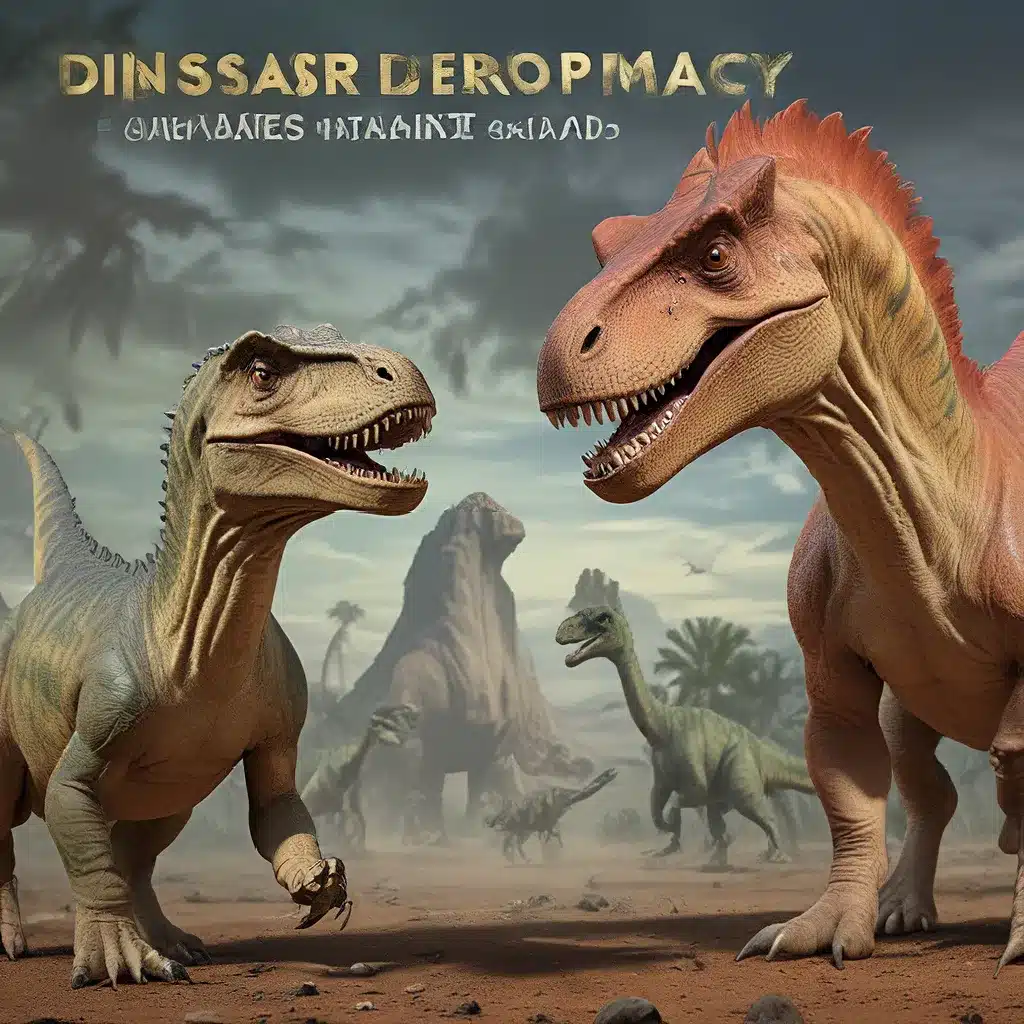
Unveiling the Social Lives of Prehistoric Titans
In the captivating realm of ancient history, the study of dinosaurs has long captured the imagination of scientists and the general public alike. Beyond their awe-inspiring size and ferocious appearances, recent archaeological discoveries have shed new light on the complex social dynamics and interspecies interactions that characterized the lives of these prehistoric giants.
Through meticulous excavations, insightful analyses, and cutting-edge technologies, researchers have uncovered a treasure trove of evidence that challenges the traditional portrayal of dinosaurs as solitary, aggressive creatures. Instead, a more nuanced and interconnected picture of their societies is emerging, revealing fascinating insights into their behavioral patterns, communication methods, and even potential emotional capacities.
Cooperative Coexistence: The Rise of Dinosaur Herds
One of the most significant revelations from recent dinosaur research is the discovery of evidence for sophisticated social structures and cooperative behaviors. Numerous fossil sites have yielded remarkable findings of dinosaur herds, suggesting that these ancient behemoths were not merely solitary hunters, but highly social animals that thrived in collaborative communities.
Studies of dinosaur trackways have uncovered intricate patterns of footprints, indicating that these prehistoric creatures moved and traveled together in organized groups. The discovery of nesting sites with multiple eggs and hatchlings further supports the notion that dinosaurs engaged in communal parenting, with adults working together to protect and nurture their young.
Equally intriguing are the signs of conflict resolution and interspecies diplomacy within these dinosaur societies. Evidence suggests that certain species may have developed strategies to coexist peacefully, such as resource-sharing or territory-marking mechanisms to avoid direct confrontation. These findings challenge the prevailing perception of dinosaurs as purely aggressive and territorial, hinting at a more nuanced and collaborative aspect to their social dynamics.
The Language of Dinosaurs: Deciphering Their Communication
Alongside the exploration of dinosaur social structures, researchers have also delved into the intriguing realm of their communication methods. Fossil evidence and biomechanical analyses have provided invaluable clues about the ways in which these prehistoric giants interacted and conveyed information to one another.
One of the most fascinating discoveries is the identification of specialized anatomical structures that may have served as sophisticated communication tools. For instance, the unique throat structures found in certain dinosaur species suggest the possibility of complex vocalizations, potentially ranging from low-frequency rumbles to high-pitched calls. Similarly, the elaborate head crests and horns observed in various dinosaur species have been hypothesized to play a crucial role in visual signaling and social display.
Additionally, the discovery of fossilized trackways has revealed intricate patterns of footprints that may have served as a form of nonverbal communication, potentially conveying information about territory, dominance, or even courtship. These findings suggest that dinosaurs possessed a rich and nuanced repertoire of communication strategies, challenging the long-held assumption that these prehistoric animals were limited to simple grunts and roars.
Emotional Intelligence: Exploring the Minds of Dinosaurs
Perhaps one of the most intriguing and contentious areas of dinosaur research is the exploration of their potential emotional and cognitive capacities. While the interpretation of these ancient creatures’ mental states remains a subject of ongoing debate, recent studies have uncovered tantalizing clues that suggest dinosaurs may have possessed a more sophisticated level of intelligence than previously believed.
Investigations into the brain structure and neurological development of various dinosaur species have revealed remarkable similarities to modern-day animals known for their complex social behaviors and emotional capabilities. For instance, the presence of well-developed sensory organs and advanced cognitive regions in certain dinosaur species has led some researchers to speculate about their potential for _empathy, problem-solving, and even a rudimentary sense of self-awareness_.
Moreover, the discovery of fossilized nests and parental care behaviors has further fueled the hypothesis that dinosaurs may have experienced emotional bonds and familial attachments akin to those observed in contemporary social animals. These findings challenge the traditional portrayal of dinosaurs as purely instinctual creatures, suggesting a more nuanced and complex understanding of their inner lives and social dynamics.
Implications and Future Directions
The recent advancements in dinosaur research have profoundly transformed our understanding of these prehistoric titans. From their intricate social structures and communication methods to their potential emotional capacities, the evolving picture of dinosaur behavior has upended long-held assumptions and opened up new avenues of exploration in the field of ancient life.
As we delve deeper into the captivating world of dinosaurs, the insights gained from these groundbreaking discoveries hold far-reaching implications. Not only do they shed light on the complex societal dynamics of our ancient predecessors, but they also challenge us to reconsider our own conceptions of animal intelligence and the nature of interspecies interactions.
By continuing to unravel the mysteries of dinosaur life, researchers and enthusiasts alike can gain invaluable perspectives on the rich tapestry of evolution, the resilience of living systems, and the profound interconnectedness that binds all forms of life on our shared planet. As you delve into the wondrous world of dinosaurs, may you be inspired to explore the depths of our ancient past and contemplate the enduring legacies that these remarkable creatures have left behind.


